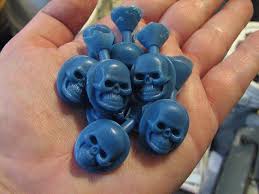The Pros and Cons of Working with Vacuum Casting Procedures
As a manufacturing method, vacuum casting is becoming more popular in nearly every industry that uses plastic parts around the planet. The casting process can be easily handled using elastomers to pour liquid plastic on a casting mold. It’s a preferred method to create parts that might have air entrapment issues or products with a staggering number of details. Vacuum casting also works wonders with thermoforming procedures, and these are known as one of the most effective methods of manufacturing since it requires the plastic materials used to be preheated and vacuumed to make the job quicker when the mold makes contact. The shape of each part comes off nice and easy with smooth finishes and requiring minimal trimming.
Working with vacuum casting provides many advantages but also a few drawbacks; let’s take a quick look at them in the form of listed pros and cons:
Pros of Vacuum Casting
Manufacturing Larger Parts
The machinery used to create vacuum casted parts can handle designs measuring 121 x 234cm. That’s quite an improvement from old school techniques that required bigger pieces to be custom-tailored individually.
Quick Overturns
With prototypes now being created on days at most, casting out a large order of product can take as long as four weeks. The working cycles of these machines can be pretty fast, so is always good to have a good idea of the type of order being placed.
Low Costs for Startups and Small Production Runs
A lot of entrepreneurs need to start their business ventures with little production numbers. Vacuum casting can offer just that with low-cost production runs that provide the same quality as large orders.
Best Option for Repeated Orders
Manufacturers with increasing sales can eventually order aluminum casts from the companies providing manufacturing services. The investment will be an ideal fit for repeated orders since the material has a near-infinite lifetime.
Cons of Vacuum Casting
Lack of Intricate Features
Vacuum casting can work a lot of details on the parts you are creating, but intricate details will need additional tooling such as pressure forming to get to the whole task done following the demands of the client.
Poor Maintenance of Molds Brings Performance Issues
Any company providing vacuum casting services needs to do regular maintenance to the molds used for these tasks. When the parts being created show traces of mark-offs, it’s time for some due clean up on the tooling parts.
Hollowness can be a Problem
Casting out hollow parts is a very imprecise process in vacuum casting since there is no way to bring the right thickness to the walls of the pieces being created. It’s not even about measuring; the science to deal with this problem is still under development.
Bad Researched Product Casting can be Quite Expensive
Most companies offering vacuum casting procedures work following the specs provided to create a product for the client. If the design has flaws or the data research about performance turns out to be wrong, it will cost the client thousands of dollars to fix the problem and even a new production run.
















